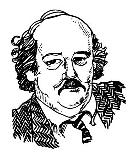(Syndicated to Kansas newspapers Aug. 15, 2016)
 We’re about to see an interesting economic/management/political experiment play out in the dusky, complicated business of assembling a two-year budget plan for the next two fiscal years of Kansas government.
We’re about to see an interesting economic/management/political experiment play out in the dusky, complicated business of assembling a two-year budget plan for the next two fiscal years of Kansas government.
The director of the budget has told state agencies under the governor’s control to find ways to cut their budgets by 5%. Hmmm….5% doesn’t sound like a lot of money, does it?
It’s the difference between leather seats and maybe a sunroof on your next new car, or chicken rather than trout at the restaurant.
Reason for the request is, of course, that the state is losing money; its taxes aren’t bringing in the amount of money that the governor wishes it would and costs for nearly everything are rising. And…of course, Gov. Sam Brownback would like to spend the last two years of his second and last term in the governor’s office providing Kansans with the services that they want, so they’ll think good of him in case he wants to look for a job when he leaves the state-provided housing at Cedar Crest.
But that 5% is a rough one, and most of us would like that sunroof and trout if we could have it.
The procedure for asking for that budget cut from state agencies isn’t new…but the 5% is higher than in previous requests for agencies to pare their spending.
That’s where the under-the-covers swapping of spreadsheets, paring of expenses and such become interesting.
Practically, agencies might take a big view and assess what they do and for whom and how to do it most economically. That makes sense. But it puts the Cabinet secretaries—and their accountants and budget minions—in the gunsights of lobbyists, unions and those who work with their agencies who will be fighting for more money for their clients and members and the public who uses those services.
Take for example, highways. A 5% budget cut to an already pretty well scoured budget means that lobbyists for highway contractors, contractors’ employees and drivers will be watching that proposed budget cut and probably not liking it.
Same for those who depend on state aid to public schools, community colleges and higher education, and for state assistance to farming, to parks and recreation and tourism, and nearly every other enterprise on which the state spends money.
Of course, there’s some logic to asking those agencies to come up with their own budget-cutting plans. Those agencies know what services they provide are most important to Kansans, and probably know where there’s a little extra money being spent, or where the qualifications for state assistance are a little loose and such.
So they’re the best people to look for that 5%.
But, they are also the people who know best where a 5% cut can become politically and socially dangerous. Don’t want the budget cut? Suggest that the cut comes from school lunches, or “yield” signs on highways or those signs that tell you the maximum weight that a bridge is likely to be able to support. Get it? Propose cuts that the agency chiefs know that the governor won’t want to put in his budget that he hands to the Legislature in January.
Yes, it’s an internal administration game that can be played several ways…either to reduce state spending to the level that no new taxes are needed, or to make the “other Cabinet secretary” take cuts that will make new taxes unnecessary—at least until the Kansas Supreme Court decision on the adequacy of state aid to public schools…
No telling whether we’ll ever see the individual agency give-ups to get to that 5% cut, or whether we’ll have to gauge which agencies made the cuts internally and which were imposed on them by the governor.
It’ll be worth watching…
